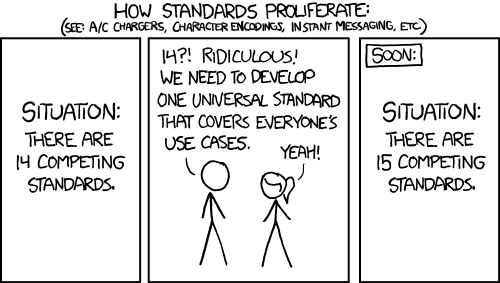The joy of being an amateur
This year I found the Conferences That Work blog by Adrian Segar, which contains some really helpful resources around events and wider learning. This post on whether we have an unhealthy relationship with work really struck a chord with me. Since writing my end of year review I've been consciously thinking about this. Over the last few months I have been considering how I take time time out, and how that fits with the way that I live my life.
 Al Pacino saying “relax... take it easy!!!”
Al Pacino saying “relax... take it easy!!!”
Earlier in my career I went all in on social media and learnt a tonne from interesting people from a variety of sectors. In the last few years I have really embraced podcasts – they've enabled me to dive into long conversations and debates on lots of niche issues. Radio has to appeal to the masses, but podcasts are a much more democratic medium.
Using social media to learn beyond the 9-5
I've been reflecting on just how much of my learning has been taking place in my own time – this very act of writing and reflecting will have been done outside my working hours. A binary work/home setup has never really existed for me. I’ve been lucky enough to have a career that genuinely interests me, so that interest has never really ended at 5pm.
However I've recently found myself needing opportunities to switch off in a way that I haven't done before. I've noticed that I'm not able to completely relax when listening to a podcast or scrolling through social media.
I left Medium last year and I continue to struggle with LinkedIn (although it seems to be having a post-Twitter renaissance amongst my work colleagues) because of the hustle culture. There's so much fetishisation of work on there, as Paul Taylor has brilliantly captured in this post:
“Just as your friends lives and relationships on Facebook look vastly more exciting than your own, on LinkedIn everyone’s employer is better than yours, and everybody goes to bed on a Sunday literally teeming with excitement for the week ahead.”
Blurring the boundaries between work and leisure
At the start of my career I'd belong to a variety of networks and I'd be working and sharing openly on social media alongside my day to day job. These days, I'm doing a fraction of what I was doing then.
What's interesting is that in this age of austerity, this issue of human resource isn’t confined to public service. Turns out that Google's much vaunted 20% Time (where they get to focus on personal interests in work time) is nothing more than a propaganda exercise (as noted in this excellent newsletter from Eat Sleep Work Repeat). I love this quote:
“20% time? We call it Saturday.”
Amateur hour 4 life
What's positive is that all this reflection has led to me thinking differently around how I spend time outside of work. It turns out that there are some advantages to having a dead end music career – it means that picking up a guitar is an opportunity to step away from work, professionalism and its stresses. Likewise, being a bog standard cyclist means that time on a bike can be about escaping to another place, both literally and metaphorically.
We’re so often taught to lionise professional excellence and the protestant work ethic. But there’s so much joy and creativity to be found in activities where we don’t excel. I’m reconnecting with being distincly average at the moment, and my life is all the better for it.
 Bart Simpson throwing a cake with “At least you tried” written on it in the bin
Bart Simpson throwing a cake with “At least you tried” written on it in the bin A GIF of a crab smashing a laptop
A GIF of a crab smashing a laptop A GIF with two people looking at a computer screen titled “Yet another think piece about working from home? Yes pls!”
A GIF with two people looking at a computer screen titled “Yet another think piece about working from home? Yes pls!”

 A robot army
A robot army A photo from the top of a hill over a green valley, taken whilst exploring Wales on my gravel bike
A photo from the top of a hill over a green valley, taken whilst exploring Wales on my gravel bike
 Somebody looking at a butterfly instead of doing work on a computer
Somebody looking at a butterfly instead of doing work on a computer